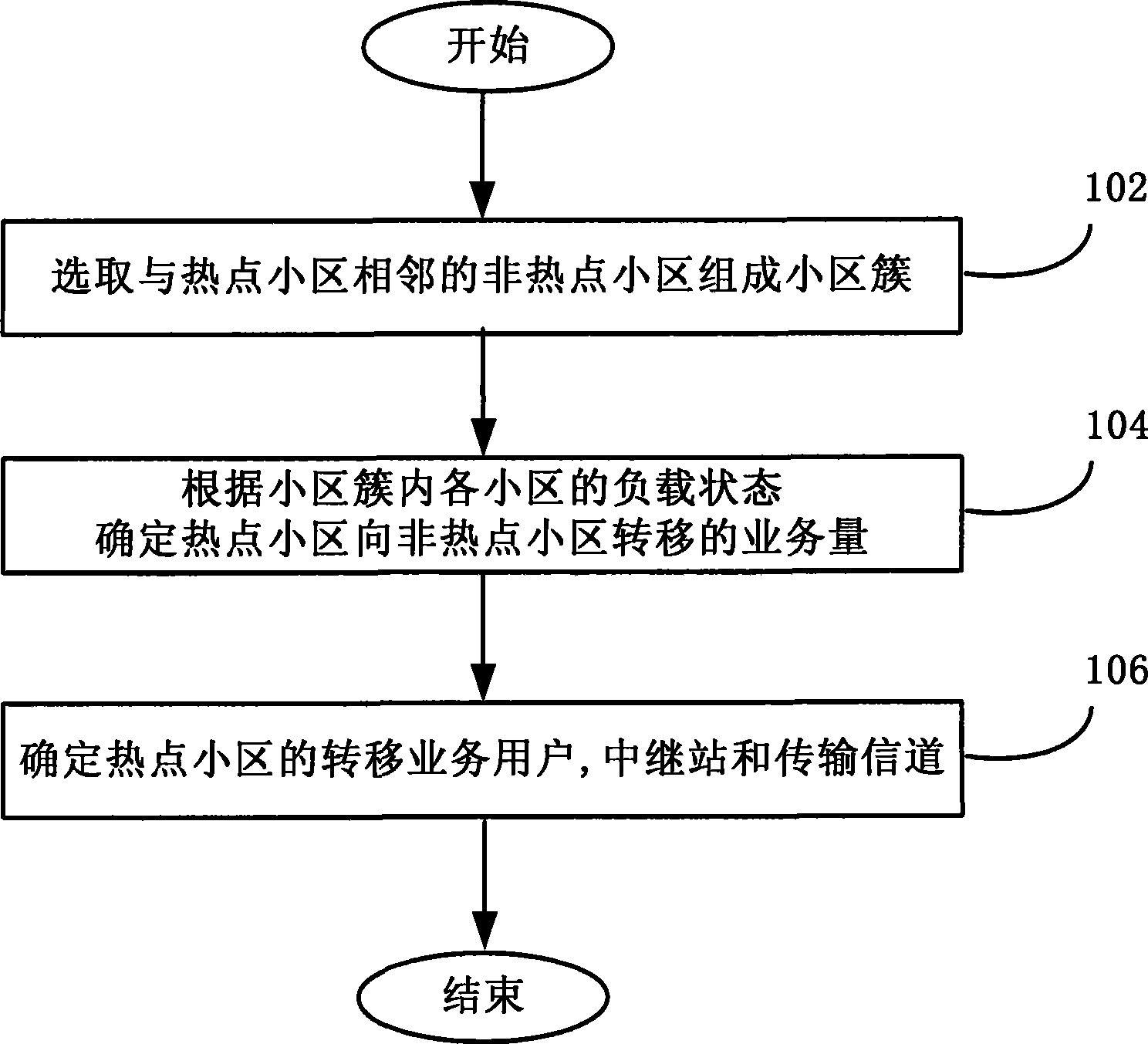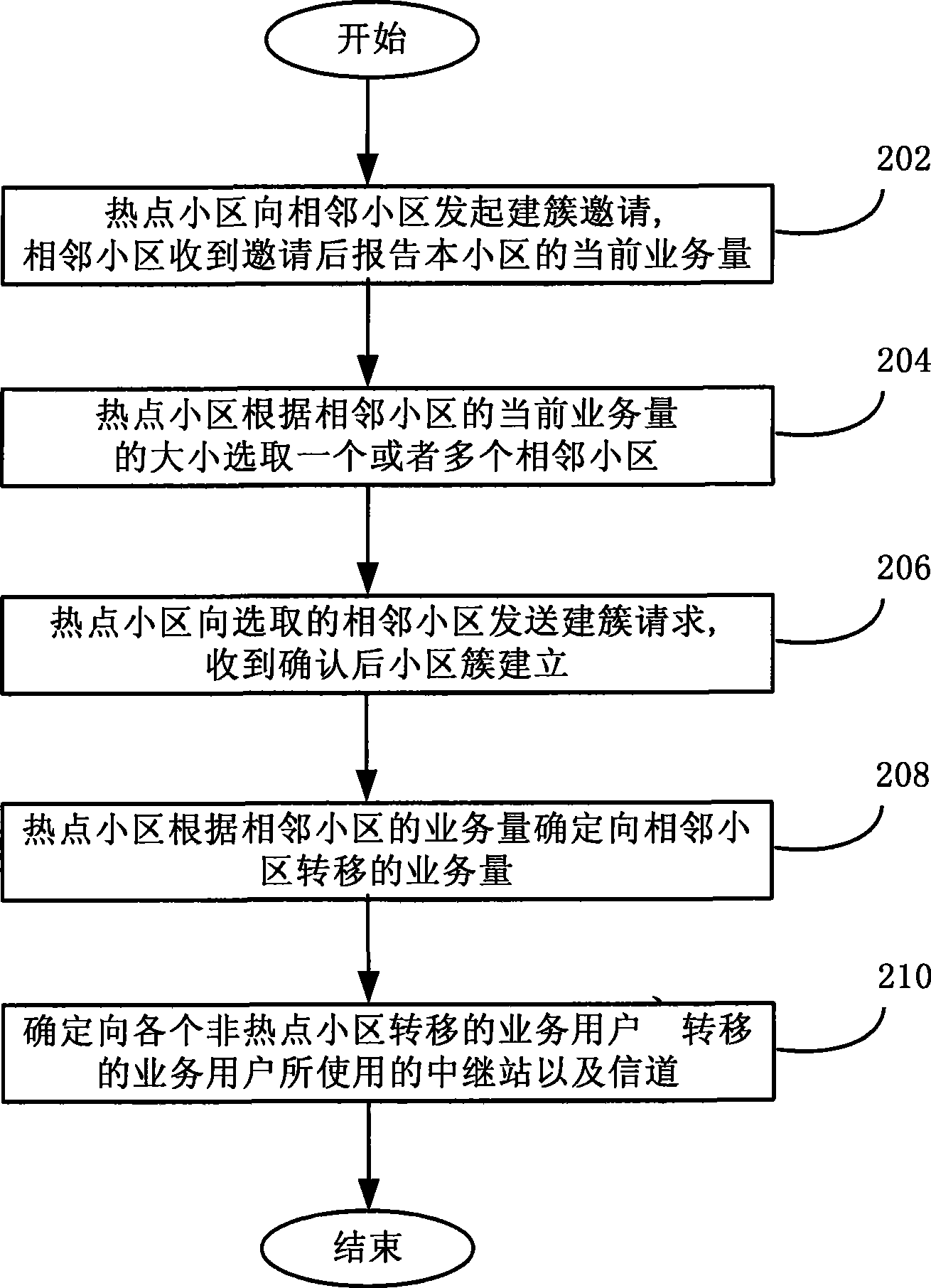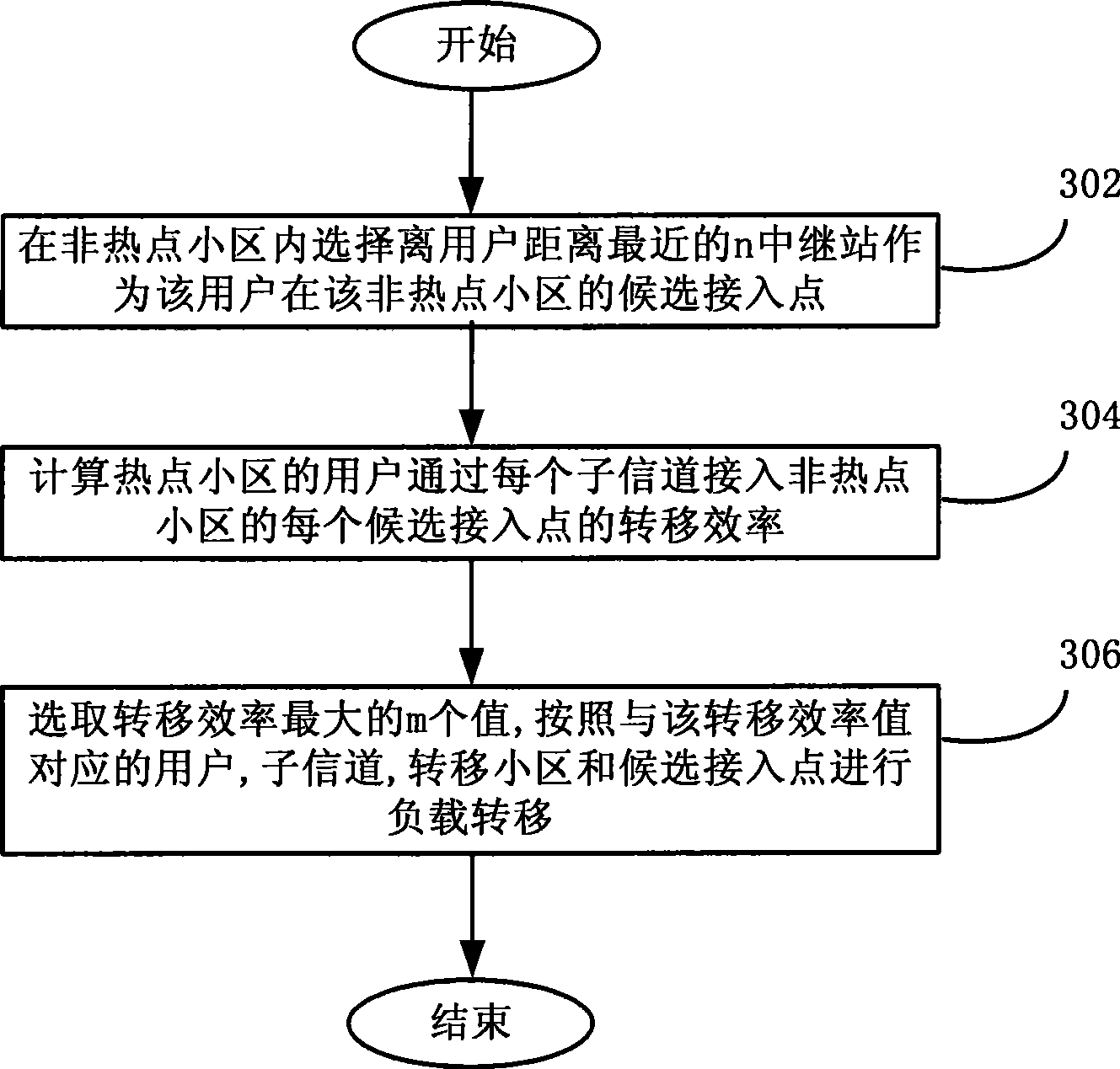Method, apparatus and base station for balancing load of honeycomb collaboration relay network
A cooperative relay and load balancing technology, applied in network traffic/resource management, electrical components, wireless communication, etc., can solve problems such as cell congestion, interference, and spectrum utilization reduction, and achieve the goal of improving spectrum efficiency and reducing blocking rate Effect
- Summary
- Abstract
- Description
- Claims
- Application Information
AI Technical Summary
Problems solved by technology
Method used
Image
Examples
Embodiment Construction
[0021] The present invention will be described more fully hereinafter with reference to the accompanying drawings, in which exemplary embodiments of the invention are illustrated.
[0022] figure 1 is a flowchart of an embodiment of the load balancing method of the present invention.
[0023] Such as figure 1 As shown, in step 102, the hotspot cell selects non-hotspot cells adjacent to the hotspot cell to form a cell cluster. The hotspot cell dynamically selects adjacent non-hotspot cells to form a cell cluster according to the business distribution of the cell and the load of adjacent cells.
[0024] In step 104, the hotspot cell determines the traffic transferred from the hotspot cell to the non-hotspot cell according to the load status of each cell in the cell cluster. The hotspot cell determines the traffic transferred to the non-hotspot cell, so that the average blocking rate of the cell cluster is reduced.
[0025] In step 106, the transfer service users of the hotsp...
PUM
 Login to View More
Login to View More Abstract
Description
Claims
Application Information
 Login to View More
Login to View More - R&D
- Intellectual Property
- Life Sciences
- Materials
- Tech Scout
- Unparalleled Data Quality
- Higher Quality Content
- 60% Fewer Hallucinations
Browse by: Latest US Patents, China's latest patents, Technical Efficacy Thesaurus, Application Domain, Technology Topic, Popular Technical Reports.
© 2025 PatSnap. All rights reserved.Legal|Privacy policy|Modern Slavery Act Transparency Statement|Sitemap|About US| Contact US: help@patsnap.com



